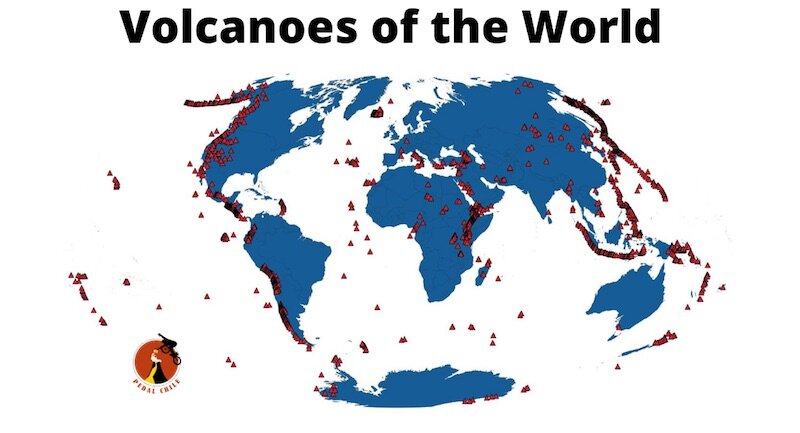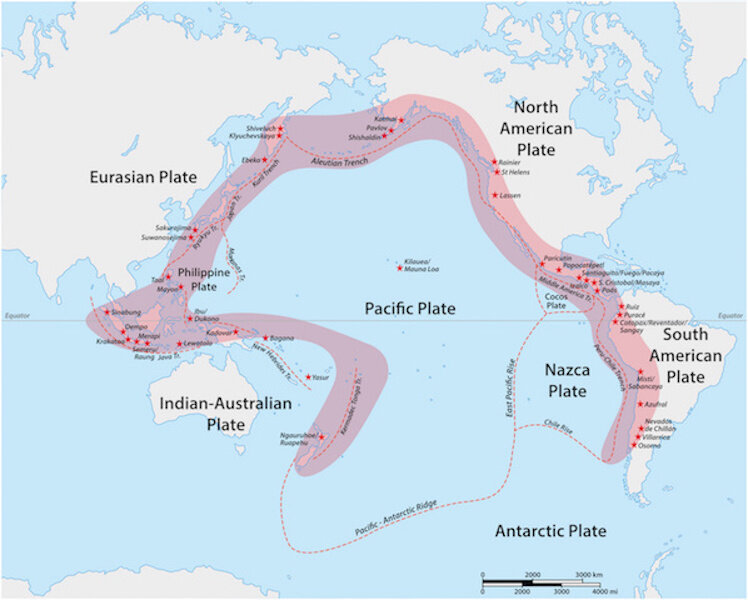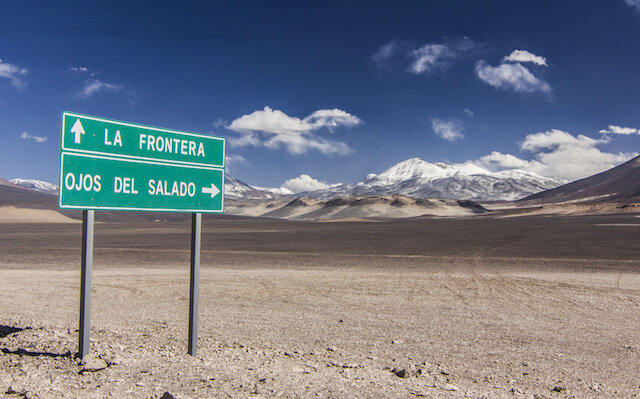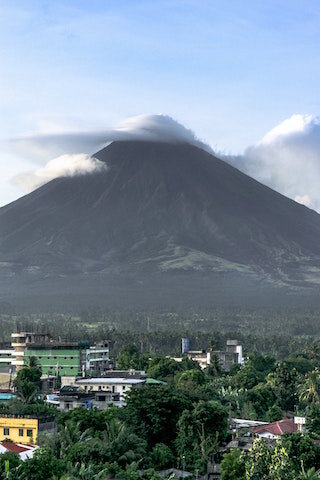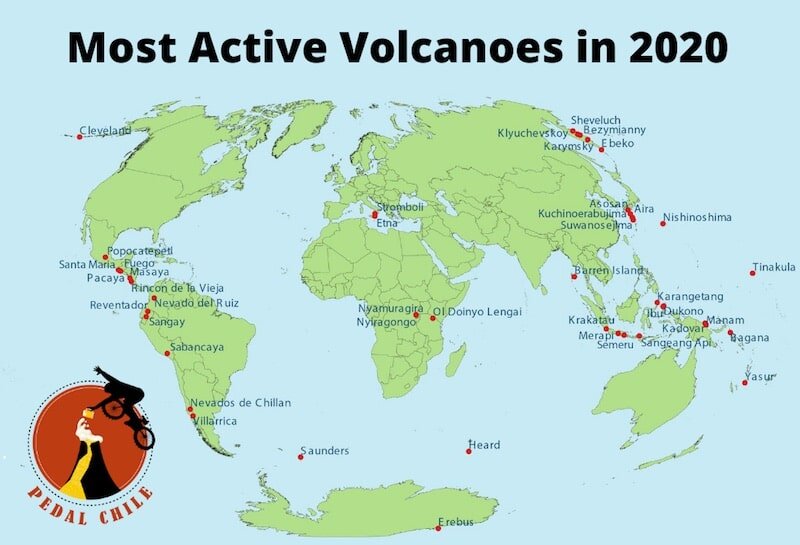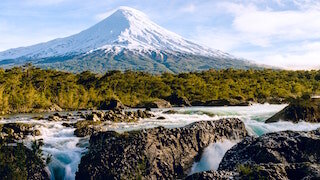Volcanic activity is the reason why the famous Big Island of Hawaii got 1 ½ kilometers of a fresh coastline not so long ago, why Guatemala’s El Rodeo cannot support human life anymore and why airports in different parts of the world, such as Bali in Indonesia have been getting closed unprecedentedly.
Our planet has 1,500 potentially active volcanoes, excluding the volcanoes on the ocean floor at spreading centers such as the Mid-Atlantic Ridge, a huge mountain range at the bottom of the Atlantic Ocean.
Yes, there could be more volcanoes in the ocean than on the earth’s surface, with experts estimating them to be about 10,000!
There are countries that rank extremely high in the number of volcanoes present within their borders worldwide and others in the total number of active volcanoes, and this article is here to clear the air for you in that regard with facts, as we explore some of the fiercest places on earth.
Let’s start with the top 7 most volcanic places on EARTH!
The most volcanic places on earth
1. Indonesia
Semeru, Indonesia
“Approximately 13% of the world’s active volcanoes are located in Indonesia ”
Indonesia contains so many active volcanoes that experts assert that more than 197 million Indonesians are living within 100 km of a volcano, with 9 million of them being within just 10 kilometers.
Indonesia has the highest number of active volcanoes in the world and is one of the places in the world that are located within the Pacific Ring of Fire. This is a 25,000 mile (40,000km) horseshoe-shaped region that borders the Pacific Ocean, where countless tectonic plates clash.
Indonesia has 147 volcanoes, 129 of which are active. They spread along the islands of Sumatra, Celebes, Java, Bali, Nusa Tenggara, Maluku, Lesser Sunda, and Sulawesi islands.
Why does Indonesia have so many volcanoes?
Tectonically, the active volcanoes are the result of a collision between 3 primary tectonic plates:
The Eurasian Plate moving south
The Indian-Australian plate moving north
Philippine Plate moving west
2. Chile
Chile is home to over 2,000 volcanoes, 60 of which have erupted over the last 450 years, and according to the Global Volcanism Program, has 122 active volcanoes.
Villarrica volcano, one of the most active volcanoes, with 59 episodes eruptions since 1558
According to experts, about 40 could start erupting in the future. Chile has the second most active string of volcanoes, only surpassed by Indonesia.
In this country, we find Llaima and Villarica, two of the most active volcanoes in Latin America.
The country is found between the Nazca (an oceanic tectonic plate located in the eastern Pacific Ocean basin) and South American Tectonic Plates. The plates shift slowly due to a river of hot magma. The plates either move away from each other or hit against each other, and this underground movement causes volcanoes.
The most recent volcanic eruption in Chile occurred near Puerto Montt, in April 2015 where the Calbuco Volcano exploded and spewed a huge volume of ash that spread to Argentina. The eruption occurred in three phases and debris from the activity landed and piled up to a depth of 2 feet in some areas and thousands of people were evacuated from the area. This is the first time the volcano erupted in four decades.
Where is the world’s highest active volcano?
Ojos del Salado on the Chilean and Argentinian border is the highest active volcano in the world at 22,614 feet (6,893 m), which is also Chile’s highest peak.
3. Japan
The tallest mountain in Japan is called Mount Fujiyama, which is an “active” volcano more famously known as Mount Fuji, which last erupted in 1707.
Japan alone accounts for nearly 1/10 of all the world’s active volcanoes with 108 of them currently active, more than any country except Indonesia and Chile.
Japan’s Mt. Fuji
These volcanoes belong to the Pacific Ring of Fire, a chain of volcanoes found throughout the Pacific Ocean and one of the most geologically active regions on our planet.
The Ring of Fire extends from New Zealand clockwise in an almost circlular arc through:
Indonesia
Philippines
Japan
Papua New Guinea
Kamchatka Peninsula of Russia
Aleutian Island of Alaska (USA)
Western coasts of North, Central, and South America
Also, the interior includes the Galapagos Islands and the Hawaiian Islands
The “Ring of Fire” (Image Source: Pambudi)
4. Papua New Guinea
Papua New Guinea is in orange. The western half of the Island is part of Indonesia (blue)
This island nation has nearly as many active volcanoes as Japan.
Papua New Guinea (PNG) is slightly larger than the state of California, except here, you will find 94 active volcanoes, including a “Decade Volcano.”
Just Like Indonesia and Japan, Papua New Guinea falls in the Pacific Ring of Fire. Which makes sense as PNG shares an island with Indonesia.
So what is a Decade Volcano?
The International Association of Volcanology and Chemistry of the Earth’s Interior has identified 16 volcanoes for intensive research because of their history of explosive eruptions in the proximity of populated areas.
They are named “Decade Volcanoes” because the project was created in the 1990s by the United Nations to bring awareness to natural disasters.
5. Ethiopia
Volcanologist, David Pyle says, “the Ethiopian rift hosts nearly 60 volcanoes that are thought to have erupted in the past 10,000 years.” Making Ethiopia the 5th most geologically active country in the world.
Erta Ale - Maybe the most famous volcano in Ethiopia
Of all the volcanoes on Earth, only 7 have an active lava lake. Erta Ale in Ethiopia actually has two lava lakes, one of which has been active for over a century.
6. Philippines
Volcano Mayon in Albay is the most active volcano in the Philippines
The Philippines have a total of 53 active volcanoes and the country is graced by such a huge number owing to its location in the Pacific Ring of Fire.
The volcanoes in this country are sometimes ranked as not only the most deadly, but also the most costly in the world.
Statistically, its historic eruptions that include the Mayon and Taal volcanoes have led to serious fatalities, and as high as 22% of its eruptions have caused substantial damage to the country.
The Philippines also witnesses lahars or mudflows and tsunamis that accompany eruptions more frequently than any other part of the world.
The most recent volcanic activity in the country was in January 2020, when a towering column of a 9-mile tall cloud of ash was seen spewing from the Taal volcano, which spread as far as 40 miles away and into the capital, Manila.
The eruption triggered a huge lightning and 144 earthquakes. More than 450,000 people were evacuated from the area.
7. Guatemala
Volcan Fuego, Antigua, Guatemala
Just like Indonesia, Guatemala’s location within the Ring of fire is responsible for the threatening array of volcanoes found there. In this region, some experts call this the Central American Volcanic Arc (CAVA), which runs through five Central American countries, most notable Guatemala (El Salvador, Honduras, Nicaragua, and Costa Rica).
The country has 37 or more volcanoes, including the famous Fuego, Santiaguito, and Pacaya. The most recent eruption in the country was in June 2018, when the Fuego volcano near Guatemala City erupted, affecting more than 1.7 million people in three central states and killing hundreds as its deadly lava flows and clouds of ashes submerged entire villages.
How is an “active volcano” defined?
According to the Global Volcanism Program, an active volcano is one “that has erupted since the last ice age (i.e., in the past ~ 10,000 years).
By this definition, planet Earth has approximately 1,500 active volcanoes. On average, about 60 volcanoes erupt globally per year.
This map shows the most active volcanoes of recently….which means these volcanoes have actually erupted within the last decade
Countries with the most dormant & extinct volcanoes
“About 60 of the Earth’s 550 historically-active volcanoes are in eruption each year”
What is a “dormant” and “extinct” volcano?
A dormant volcano is a volcano that hasn’t erupted in the past 10,000 years, but is expected to erupt again.
An extinct volcano is a volcano that is never expected to erupt again, but it’s probably safe to never say never.
#1. Chile
Chile is home to 2085 volcanoes, 94% of which are dormant or extinct.
The Chilean Southern Volcanic Zone (SVZ) stretches from near Santiago southwards to Cerro Hudson, in central Patagonia. This region is volcanologically the most active region of the Andes Mountain.
Why does Chile have so many volcanoes?
Volcan Osorno, Chile (glacier-covered stratovolcano)
Chile, like most volcanic regions, is located at the convergent boundary between a continental plate and an oceanic plate. When these plates converge, the heavier oceanic plates dives (subducts), below the lighter continental plate.
The result is molten rock (magma) from the pressure and heat and is called a subduction volcano.
2. Russia
Russia has over 400 volcanoes, most of which are found in the Kamchatka Peninsula on the eastern side of the country. Here, according to NASA, there are over 300 volcanoes, 29 of which are active.
Kamchatka Peninsula
The highest volcanic mountain in Russia is known as Klyuchevskaya Sopka and stands at 15,584 feet (4,750 meters) above sea level. It’s also the biggest active volcano in the Northern Hemisphere.
In January of 2011, the Kamchatka Peninsula had four volcanoes erupting simultaneously, all within 110 miles (180km) of each other.
3. Japan
“Mount Fuji is the tallest volcano in the country”
Japan has the third most volcanoes on Earth, totaling 270.
The volcanoes are part of the Pacific Ring of Fire and most of these volcanoes are found in Hokkaido, Chubu, Kanto, and Tohoku regions.
4. The United States of America
The U.S. has the 4th most volcanoes on Earth, 262 in total. Most of these volcanoes are found in Alaska, where you’d find eruptions nearly every year. The other volcanoes are located along the Pacific Ocean, and Hawaii, which houses Kilauea, the most active volcano on the planet. This volcano has continuously erupted since 1983.
Mount Hood is a stratovolcano in Oregon, United States of America
How many volcanoes are in Alaska?
91
This means that 35% of all volcanoes in the United States can be found in Alaska
What state has the second most?
California and Oregon tie….with 17 each. Mount Shasta and Mount Hood might be the most famous in each state.
5. Indonesia
A master of volcanoes it seems, Indonesia also makes it to this list by having a total of 147 volcanoes. It is said that the largest eruptions on earth so far have occurred in Indonesia.
Bottom line
It’s clear that scientists are only starting to scratch the surface when it comes to the discovery of the existing number of volcanic mountains and active volcanoes in the planet. This is especially because 80 percent of the volcanic eruptions occur in the ocean, an area that is largely under-researched.
Valentina is a guide for Pedal Chile and is our geology expert. Valentina has been in love with volcanoes ever since she first saw Villarrica glowing in her native country of Chile. Valentina was born and raised in La Patagonia, which probably explains her affinity for adventuring. When Valentina isn’t crushing some poor dude’s soul, you can find her shredding down Rucapillán. Favorite season: Austral Summer
More articles from Pedal Chile
References
“Calbuco Volcano Erupts.” Nasa.Gov, NASA Earth Observatory, 24 Apr. 2015, earthobservatory.nasa.gov/images/85767/calbuco-volcano-erupts.
Cermak, Jan. Illustrated History Of Natural Disasters. 2016.
Charles Arthur Wood, and Jürgen Kienle. Volcanoes of North America : United States and Canada. New York, Cambridge University Press, 1990.
Dzierma, Yvonne, and Heidi Wehrmann. “On the Likelihood of Future Eruptions in the Chilean Southern Volcanic Zone: Interpreting the Past Century’s Eruption Record Based on Statistical Analyses.” Andean Geology, vol. 39, no. 3, 27 Sept. 2012.
“Four Erupting Volcanoes on the Kamchatka Peninsula.” Earthobservatory.Nasa.Gov, 3 Feb. 2013.
Global Volcanism Program, 2013. Volcanoes of the World, v. 4.9.0 (04 Jun 2020). Venzke, E (ed.). Smithsonian Institution
“Hudson.” Www.Volcanodiscovery.Com, www.volcanodiscovery.com/hudson.html.
Irfan, Umair. “A Volcano in the Philippines Is Spewing Ash and Threatening a Bigger Eruption.” Vox, 13 Jan. 2020.
Lara, Luis E. “The 2008 Eruption of the Chaitén Volcano, Chile: A Preliminary Report.” Andean Geology, vol. 36, no. 1, Jan. 2009.
Oppenheimer, C., et al. “Sulfur, Heat, and Magma Budget of Erta ‘Ale Lava Lake, Ethiopia.” Geology, vol. 32, no. 6, 2004, p. 509.
Pambudi, Nugroho Agung. “Geothermal Power Generation in Indonesia, a Country within the Ring of Fire: Current Status, Future Development and Policy.” Renewable and Sustainable Energy Reviews, vol. 81, Jan. 2018, pp. 2893–2901.
Porterfield, Jason, and Corona Brezina. Chile : A Primary Source Cultural Guide. New York, Rosen Publishing Group’s, 2004.
Pyle, David. “Volcanoes of the Ethiopian Rift Valley | Www.Oxfordsparks.Ox.Ac.Uk.” Www.Oxfordsparks.Ox.Ac.Uk, 17 Nov. 2015.
Simkin, Tom, et al. This Dynamic Planet World Map of Volcanoes, Earthquakes, Impact Craters, and Plate Tectonics. 1994.
“Volcanoes of Indonesia.” Volcanodiscovery.Com, 2020, www.volcanodiscovery.com/indonesia.html.
“Volcanoes of Japan: Facts & Information / VolcanoDiscovery.” Volcanodiscovery.Com, 2020, www.volcanodiscovery.com/japan.html.
“Volcanoes of Kamchatka.” Nasa.Gov, NASA Earth Observatory, 25 Sept. 2014, earthobservatory.nasa.gov/images/84427/volcanoes-of-kamchatka.
“Why Guatemala’s Volcano Has Been More Deadly Than Hawaii’s.” The New York Times, 8 June 2018, www.nytimes.com/2018/06/08/science/volcano-guatemala-hawaii.html.
Zaennudin, A.: “The characteristic of eruption of Indonesian activevolcanoes in the last four decades,” J. Lingkungan dan BencanaGeol., 1, 113–129, 201.

